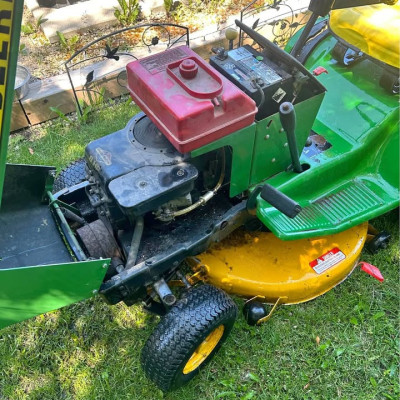Ultimate Hair Care Guide: Tailor Your Routine to Your Hair Porosity
When it comes to hair care, one size does not fit all. Understanding your hair's unique needs is crucial for achieving the healthy, vibrant locks you’ve always wanted. One of the most important factors to consider is your hair's porosity. But what exactly is hair porosity, and how can you tailor your hair care routine to suit it? Let’s dive in.
### What is Hair Porosity?
Hair porosity refers to your hair’s ability to absorb and retain moisture. It is determined by the structure of your hair cuticle, which is the outermost layer of your hair strand. The cuticle is made up of small, overlapping scales that can either be tightly packed or more loosely arranged, affecting how easily moisture can enter and exit the hair shaft.
There are three main types of hair porosity:
- **Low Porosity* The cuticles are tightly packed and overlap, making it difficult for moisture to penetrate. However, once moisture is absorbed, it tends to be retained well.
- **Medium/Normal Porosity* The cuticles are slightly raised, allowing moisture to enter and exit the hair shaft easily. This type of hair is generally the easiest to manage and requires less maintenance.
- **High Porosity* The cuticles are raised or even damaged, making it easy for moisture to enter but also causing it to escape quickly. High porosity hair often looks and feels dry or frizzy and may require extra care.
### How to Determine Your Hair Porosity
Before you can tailor your hair care routine, you need to know your hair porosity. Here are a few simple tests you can try:
1. **The Float Test* Take a few strands of clean, dry hair and place them in a glass of water. Let them sit for 2-4 minutes. If your hair floats, you have low porosity. If it sinks slowly, you have medium porosity. If it sinks quickly, you have high porosity.
2. **The Slip ‘n’ Slide Test* Take a strand of hair and slide your fingers up from the tip to the root. If your fingers move smoothly, you have low porosity hair. If you feel some bumps, you have high porosity hair. Medium porosity hair will feel somewhat smooth with slight resistance.
3. **The Spray Bottle Test* Mist a small section of your hair with water. If the water beads up on the surface, your hair is low porosity. If it absorbs quickly, your hair is high porosity. Medium porosity hair will absorb moisture at a moderate rate.
### Hair Care Tips Based on Your Hair Porosity
Once you know your hair porosity, you can start to customize your hair care routine to meet your specific needs.
#### **Low Porosity Hair Care**
Low porosity hair can be challenging to moisturize, as the tightly packed cuticles prevent moisture from easily penetrating the hair shaft. To care for low porosity hair:
- **Use Heat* Applying heat can help open up the cuticle, allowing moisture to penetrate. Use a hooded dryer, steam cap, or warm towel to help your hair absorb deep conditioners and treatments.
- **Lightweight Moisturizers* Opt for lightweight, water-based products that won’t weigh your hair down. Look for ingredients like aloe vera, glycerin, and honey, which can help attract moisture to your hair.
- **Avoid Buildup* Since low porosity hair is prone to product buildup, use clarifying shampoos occasionally to keep your hair clean and free from residue.
#### **Medium Porosity Hair Care**
Medium porosity hair is the most manageable and versatile. However, it’s still important to maintain a balanced routine:
- **Regular Conditioning* Regularly condition your hair to maintain moisture levels. You can use both moisturizing and protein-based treatments to keep your hair healthy and strong.
- **Avoid Overloading* Don’t overload your hair with heavy products, which can cause buildup and weigh it down. Stick to a moderate amount of styling products.
- **Protective Styles* Medium porosity hair responds well to protective styles like braids, twists, and updos, which can help retain moisture and reduce damage.
#### **High Porosity Hair Care**
High porosity hair requires extra attention to maintain moisture levels and reduce frizz:
- **Moisture Lock* Use leave-in conditioners, creams, and oils to lock in moisture. Layering products can create a barrier that helps prevent moisture loss.
- **Protein Treatments* High porosity hair often benefits from regular protein treatments, which can help repair and strengthen the cuticle, reducing breakage and frizz.
- **Seal with Oils* Use heavier oils, like castor oil or shea butter, to seal in moisture and protect your hair from environmental damage.
### General Tips for All Hair Porosities
Regardless of your hair porosity, there are a few universal tips that can help keep your hair healthy and vibrant:
- **Avoid Heat Damage* Limit the use of heat-styling tools, and always use a heat protectant when you do. Excessive heat can damage the cuticle, leading to higher porosity and more fragile hair.
- **Trim Regularly* Regular trims can help prevent split ends and keep your hair looking fresh and healthy.
- **Balanced Diet* A balanced diet rich in vitamins and minerals is essential for healthy hair growth. Consider incorporating foods rich in biotin, zinc, and omega-3 fatty acids.
### Conclusion
Understanding your hair porosity is the key to unlocking the perfect hair care routine. By tailoring your products and techniques to suit your hair’s unique needs, you can achieve the healthy, beautiful hair you’ve always dreamed of. Remember, your hair is unique, and with the right care, it can thrive!
처럼
논평
공유하다





